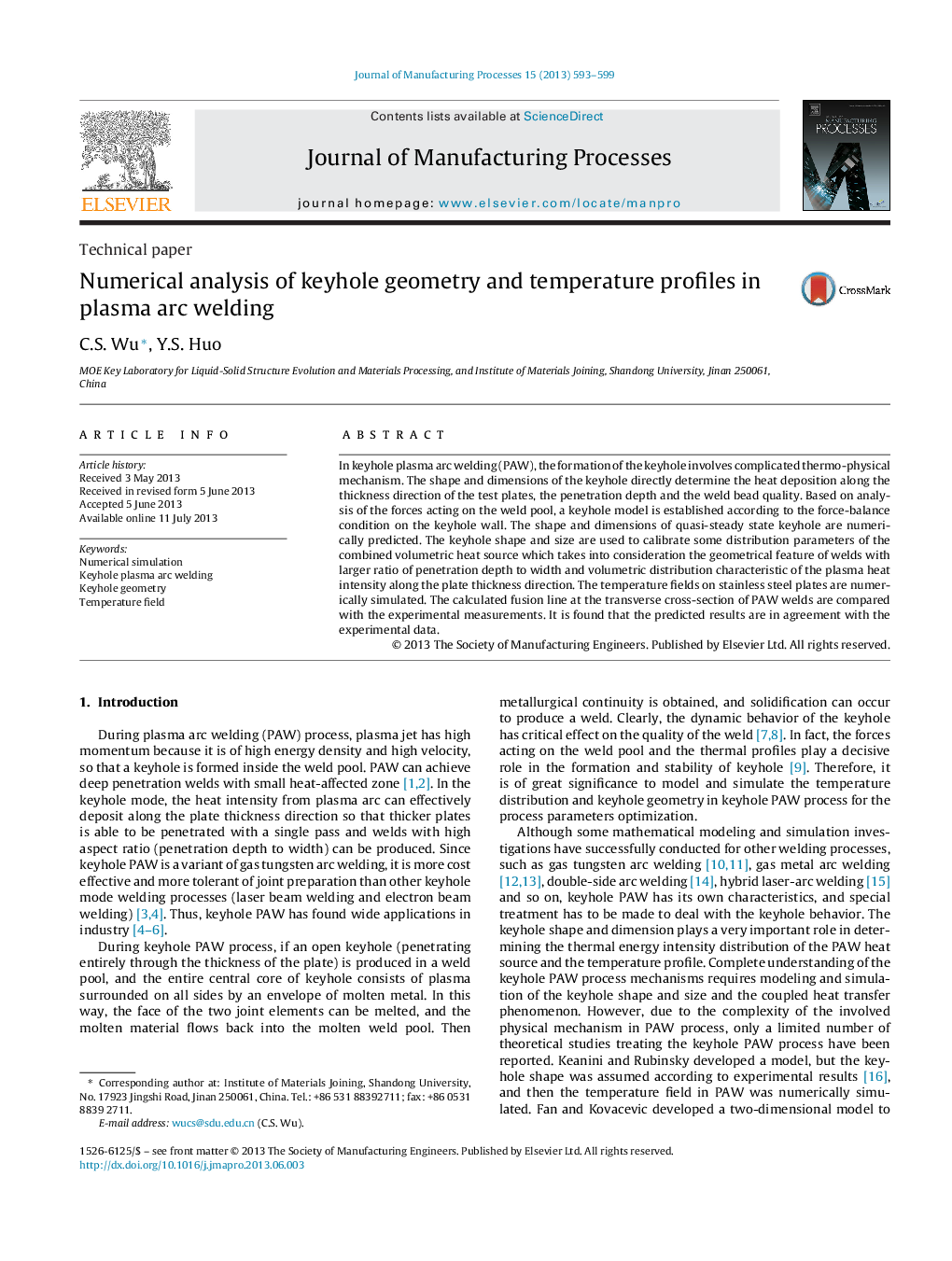| Article ID | Journal | Published Year | Pages | File Type |
|---|---|---|---|---|
| 1697036 | Journal of Manufacturing Processes | 2013 | 7 Pages |
•A keyhole model is developed according to the force-balance condition on the keyhole wall.•The predicted keyhole dimensions are employed to calibrate the parameters of the adaptive heat source model.•The calculated weld geometry and fusion line are in agreement with the experimental measurement.
In keyhole plasma arc welding (PAW), the formation of the keyhole involves complicated thermo-physical mechanism. The shape and dimensions of the keyhole directly determine the heat deposition along the thickness direction of the test plates, the penetration depth and the weld bead quality. Based on analysis of the forces acting on the weld pool, a keyhole model is established according to the force-balance condition on the keyhole wall. The shape and dimensions of quasi-steady state keyhole are numerically predicted. The keyhole shape and size are used to calibrate some distribution parameters of the combined volumetric heat source which takes into consideration the geometrical feature of welds with larger ratio of penetration depth to width and volumetric distribution characteristic of the plasma heat intensity along the plate thickness direction. The temperature fields on stainless steel plates are numerically simulated. The calculated fusion line at the transverse cross-section of PAW welds are compared with the experimental measurements. It is found that the predicted results are in agreement with the experimental data.
